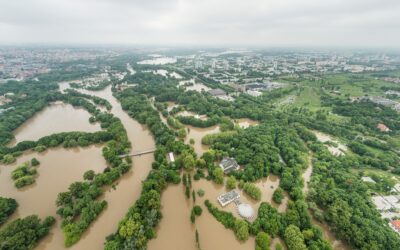Reno, Nev. (Friday, Sept. 21) – Mountain snowpack and rainfall are the primary sources of water for the arid western United States, and water allocation rules determine how that water gets distributed among competing uses, including agriculture. Historically, agriculture in the West has benefited from predictable snowmelt, but under changing climate conditions, earlier melting of mountain snowpack is altering the timing of runoff, putting additional pressure on water storage and delivery infrastructure to meet the needs of agricultural water rights holders.
To explore solutions for these critical water problems, a research team led by the University of Nevada, Reno and including interdisciplinary experts from the Desert Research Institute, Colorado State University, Northern Arizona University, and Arizona State University has received $4.97 million from the USDA National Institute of Food and Agriculture for a major research effort into snowpack and water resources in the West.
Over the next five years, the research team will investigate:
- How changes in mountain snowpack affect available water,
- Which basins in the arid West are most at risk,
- The effectiveness of existing water allocation laws and regulation in managing these changes, in comparison with proposed modifications, and
- How changes in available water, and laws and regulations, affect the economic well-being of various groups in society – including the sustainability of agricultural production in the arid West.
“The impacts of changing mountain snowmelt on water rights holders are profound,” said Kim Rollins, University of Nevada, Reno professor and project director for the grant. “Increased risk affects private decisions to sell irrigation water rights, potentially causing permanent losses in the capacity for food production in the arid West. Decision-making can be improved with a better understanding of how changes in water flows influence agriculture producer decision-making and how laws and regulations can exacerbate or relieve constraints imposed by these changes.”
DRI’s Seshadri Rajagopal, Ph.D., assistant research professor of hydrometeorology, and Greg Pohll, Ph.D., research professor of hydrogeology, will be contributing their expertise in hydrologic modeling to the project. Specifically, Rajagopal and Pohll will be studying three significant watersheds throughout the arid West: the Walker in Nevada, the Verde in Arizona, and the South Platte in Colorado.
“We’ll be utilizing the national water model, a hydrologic model that simulates observed and forecasted streamflow over the entire continental United States, and adapting it for the study area to represent physical processes such as snowmelt, infiltration, and soil water storage,” explained Rajagopal. “This data will allow economists and policy makers to understand how water supply in these watersheds changes and to study its impact on water allocation and institutions.”
This project is one of seven total projects supported by the U.S. Department of Agriculture’s (USDA) National Institute of Food and Agriculture (NIFA) $34 million in grants for research through the Agriculture and Food Research Initiative (AFRI) Water for Food Production Systems Challenge Area, which is authorized by the 2014 Farm Bill.
The research team:
- Kimberly Rollins, professor, University of Nevada, Reno, College of Business, Department of Economics and Nevada Agricultural Experiment Station, College of Agriculture, Biotechnology and Natural Resources
- Loretta Singletary, interdisciplinary outreach liaison, University of Nevada Cooperative Extension and professor, University of Nevada, Reno, College of Business, Department of Economics
- Adrian Harpold, assistant professor in Natural Resources and Environmental Sciences, and Nevada Agricultural Experiment Station at the University of Nevada, Reno, College of Agriculture, Biotechnology and Natural Resources; Global Water Center
- Michael Taylor, assistant professor, University of Nevada, Reno, College of Business, Department of Economics and state specialist in agricultural and resource, University of Nevada Cooperative Extension
- Gi-Eu Lee, postdoctoral fellow, University of Nevada, Reno, College of Business, Department of Economics
- Seshadri Rajagopal, assistant research professor, Desert Research Institute, Division of Hydrologic Sciences
- Greg Pohll, professor, Desert Research Institute, Division of Hydrologic Sciences
- Dale Manning, assistant professor, Colorado State University, College of Agricultural Sciences, Agricultural and Resource Economics Department
- Christopher Goemans, associate professor, Colorado State University, College of Agricultural Sciences, Agricultural and Resource Economics Department
- Abigail York, associate professor, Arizona State University, School of Human Evolution and Social Change
- Benjamin Ruddell, associate professor, Northern Arizona University, School of Informatics, Computing and Cyber Systems
- Bryan Leonard, assistant professor, Arizona State University, School of Sustainability
To learn more about the USDA National Institute of Food and Agriculture grant recipients, please visit: https://nifa.usda.gov/announcement/nifa-invests-research-solve-critical-water-problems. Nicole Shearer of the University of Nevada, Reno and Aaron Pugh of Arizona State University contributed to this release.
###
The Desert Research Institute (DRI) is a recognized world leader in basic and applied interdisciplinary research. Committed to scientific excellence and integrity, DRI faculty, students, and staff have developed scientific knowledge and innovative technologies in research projects around the globe. Since 1959, DRI’s research has advanced scientific knowledge, supported Nevada’s diversifying economy, provided science-based educational opportunities, and informed policy makers, business leaders, and community members. With campuses in Reno and Las Vegas, DRI serves as the non-profit research arm of the Nevada System of Higher Education.


